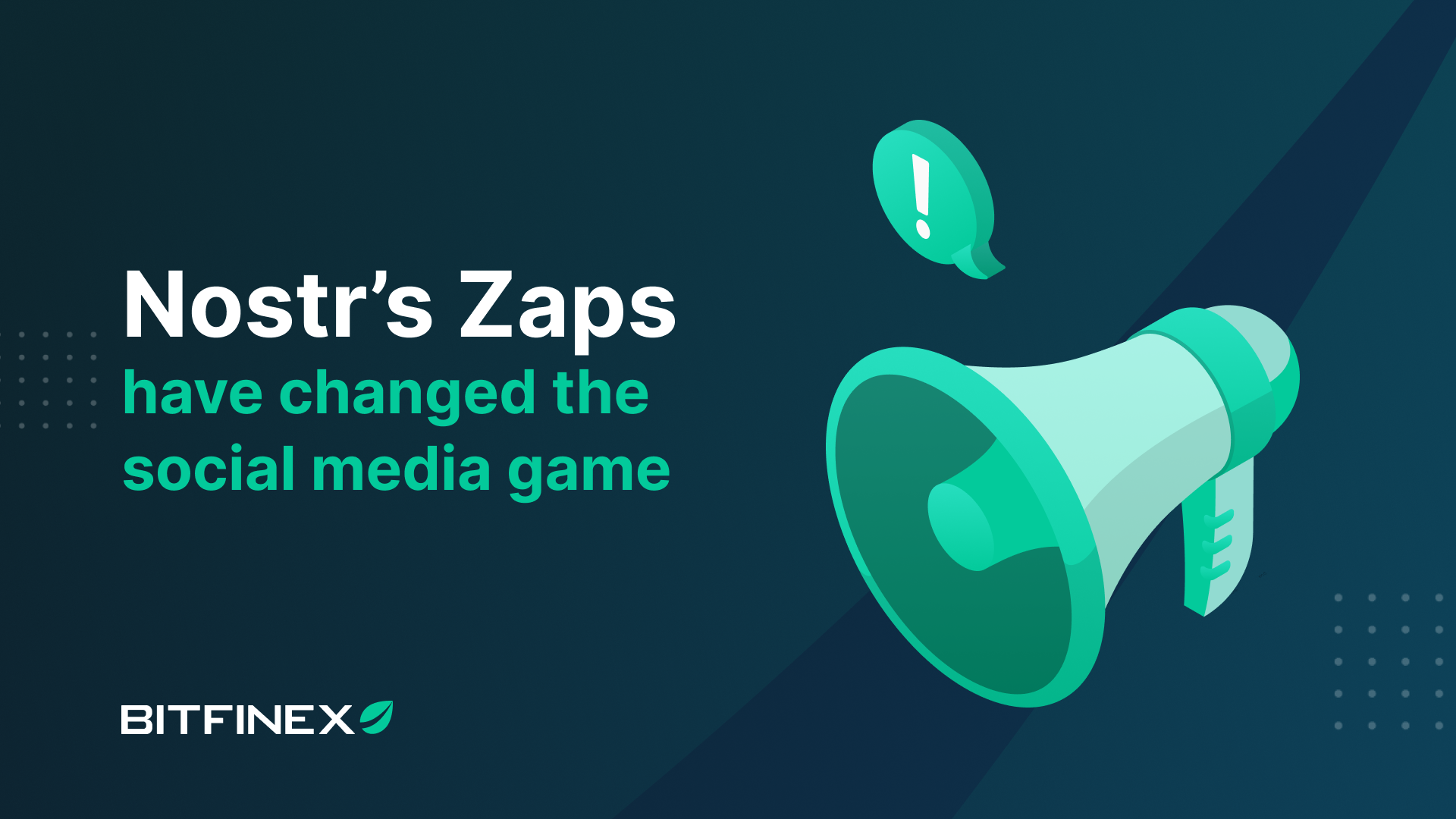
10 Mar Nostr’s Zaps have changed the social media game
Nostr is a new decentralised social media protocol that has taken the Bitcoin world by storm, by offering a decentralised and censorship-resistant social media experience. Many Nostr clients now have native Lightning Network micropayments known colloquially as Zaps. Let’s find out what all the excitement is about.
Zaps are Nostr’s Lightning Network powered micropayments
Bitcoiners are flocking to Nostr, eager to abandon Twitter for the new decentralised social media alternatives being constructed on top of the Nostr decentralised social media protocol. Development is moving forward at breakneck speed as many developers are releasing Nostr clients for mobile and PC.
A flurry of new Nostr-based social media apps which offer similar and familiar experiences to established centralised social media platforms like Twitter, Twitter Spaces, Medium, and Reddit, are popping up everywhere. Central to Nostr’s user experience is the addition of Zaps, the ability to tip, or send a small micropayment in Satoshis to another user, using Bitcoin’s Lightning Network.
Some Nostr users have reported earning more in Sats by posting memes than they earn from routing fees on their Lightning Network nodes. Zaps were made possible in Nostr thanks to Nostr Improvement Proposal (NIP) 57. Nostr uses NIPs which are very similar to BIPs in Bitcoin, where developers can propose new features or changes, which can be voted on by the developer community to include in the protocol.
Zaps have quickly become seen as fun and cool, and add a new addictive quality to Nostr that combines sending and receiving actual money along with the standard fare dopamine hit that social media users usually receive normally from likes, shares, and comments.
The result is an extremely entertaining social media experience, which feels more organic than centralised counterparts, as there are no algorithms shaping the content you receive in your timeline, no ads, and an assortment of interesting people and colourful personalities to interact with.
Nostr users have been on a Zapping frenzy sending Satoshis back and forth to each other for funny Bitcoin memes, insightful or helpful posts, witty replies, or hilarious comments. There are even bots which zap users at random, although they tend to annoy a bit with the constant notifications.
Zaps have also been a great way to bring micropayments over Lightning to new users, spur Nostr adoption, and add a layer of gamification to a new kind of decentralised social media experience.
Nostr clients & Bitcoin wallets that support Zaps and NIP-57
Not all Nostr clients have Zaps integrated yet, although many of the most popular ones already do. In turn, not all Bitcoin wallets have implemented NIP-57 support yet, but there are quite a few that already have.
A Nostr client is an app which lets you browse Nostr posts, make your own posts, and interact with other users on the open and decentralised network. Your Bitcoin Lightning Network wallet can be connected to your client app, so you can send Zaps from within the client, by simply clicking the Lightning symbol underneath a post.
NIP-57 Compatible Lightning Network wallets
A Nostr user named Hex posted this helpful list on Nostr to help users get up to speed with choosing a NIP-57 compatible wallet so they can start boosting as easily and as quickly as possible.
- Strike.Army
- Vida.Page
- Stacker.News
- LN.Tips
- Bitcoin Jungle App
- Geyser.Fund
- Bitcoin Beach
- WalletofSatoshi.com
- GetAlby.com
- ZBD.gg
- GetCurrent.io*
*Current is also a Nostr client along with being a Lightning wallet, which means you can use it to browse and post on Nostr platforms, as well.
Popular Nostr clients
There are a lot of different Nostr clients, they’re all pretty new and many are still under development, so some clients are more polished and feature-rich than others. The different clients range from web apps, mobile apps on iOS and Android, and desktop apps for your computer. Below, we’ll list some of the more popular clients, in no particular order.
- Iris.to (Web app & Mobile app for Android) Iris also has an iOS app in test flight
- Astral.Ninja (Web app)
- Damus.io (iOS only)
- Snort.Social (Web app)
- Amethyst (Android only)
- Nostrid (Multi-platform)
- Current.io (link listed above in wallet section)
WTF is a Nostr?
Nostr’s cryptic name is actually an acronym which stands for “Notes and Other Stuff Transmitted by Relays”. It’s a simple protocol for decentralised social media which is versatile and has seen an explosive amount of growth and hype over the last few months in Bitcoin land.
Nostr is a decentralised social media protocol designed to facilitate free speech and censorship-resistance, which allows users to create accounts which are based upon public/private key encryption similar to crypto wallets and PGP which many Bitfinex users are already very familiar with.
Public/private key encryption is what allows a user to have a “private key” which allows only the key holder to be able to decrypt a message. The holder of a private key, can freely give out their “public key” to receive encrypted messages from any other user, and only the private key holder can decrypt these messages, and receive the information within.
In crypto, these messages would be receiving or spending transactions, but in Nostr they’re communications, direct messages, or posts. This public/private key encryption in Nostr is central to how the protocol functions.
In a nutshell, users sign messages with their private keys and receive them from others, with their public keys and broadcast them to each other using relay servers to disseminate the messages to the wider Nostr network.
Relay servers make these messages available to Nostr clients, and in turn users who are using said clients. Using this public/private key pair, users can ensure they own their own data and can take it with them if they elect to switch platforms. The key pair also makes it so users can sign messages to prove that they are themselves, without any fakery, impersonation, or fraud.
The Nostr Github says it best:
“Everybody runs a client. It can be a native client, a web client, etc. To publish something, you write a post, sign it with your key and send it to multiple relays (servers hosted by someone else, or yourself). To get updates from other people, you ask multiple relays if they know anything about these other people. Anyone can run a relay. A relay is very simple and dumb. It does nothing besides accepting posts from some people and forwarding to others. Relays don’t have to be trusted. Signatures are verified on the client side.”
While Nostr is just a protocol for passing messages along, using encryption, it also is simple and elegantly designed, making it extremely easy to implement and add it to a wide range of social networking apps.
Developers have taken Nostr’s simplicity and run with it, creating a huge amount of new social media apps which all utilise Nostr’s messaging protocol on the back end. Nostr users can use their same keypair to log in to all the different Nostr platforms, and have their data imported automatically, and they can prove their identities in a way which cannot be faked.
Nostr also lets users choose which relays they want to follow, and even use their own relay which they host themselves. Depending on the relays you’re using, you can see different content hosted on these relays. There are even paid relays which reduce spam posts, and make it easier for users to avoid it, and curate their feeds with the content they want, with some paid relays even being focused to specific niches.
To get started with Nostr, learn more about it, here.



